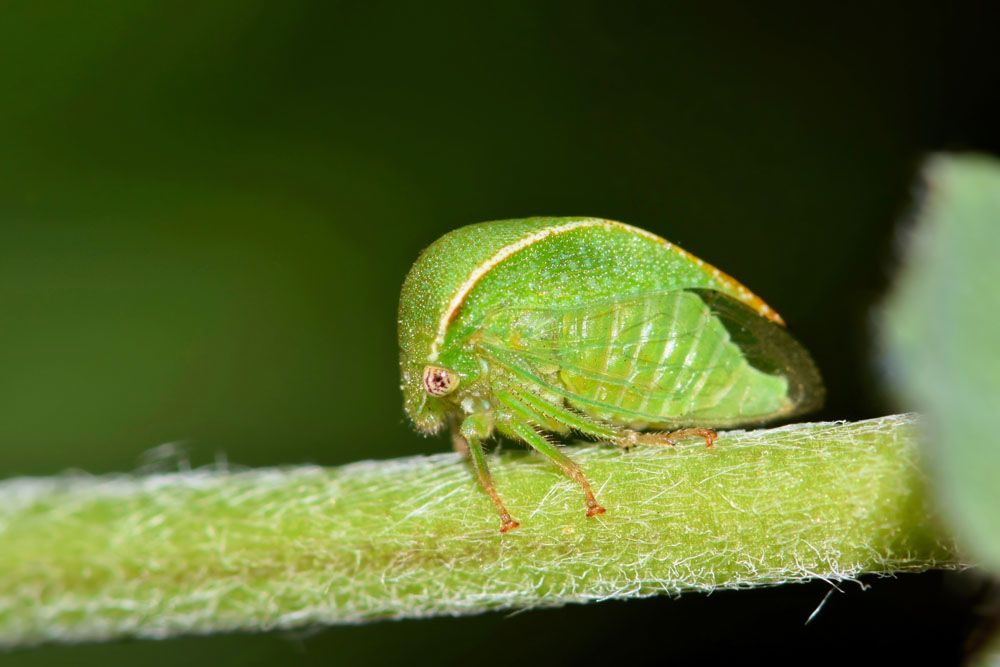
Threecornered Alfalfa Treehopper – Spissistilus festinus
Three-cornered Alfalfa Treehopper – Spissistilusfestinus
Common Name: Three-cornered Alfalfa Treehopper
Latin Name: Spissistilusfestinus
Appearance:
Three-cornered alfalfa hoppers are members of the insect family known as treehoppers because they hop and fly when disturbed. Adults are green, about 1/4 inch long, and taller than broad due to a prothorax (extended portion) behind the head that extends over the belly. Nymphs are likewise green and wingless, with a smaller prothorax. Each body segment has a pair of large filaments or spines.
Host plant:
Leguminous plants such as alfalfa, soybean, bean, cowpea, and sweet clover are favorites of three-cornered alfalfa hoppers. Tomatoes, melon, wheat, barley, oats, Bermuda grass, Johnson grass, and several trees and shrubs are infrequently affected.
Territory:
Three-cornered alfalfa hoppers are found as far north as Canada, although they are only an infrequent or prospective concern in the southern United States and northern Mexico.
Damages caused by Three-cornered Alfalfa Treehopper:
Adults and nymphs of the alfalfa hopper eat by putting their mouthparts into stems and sucking out fluids at the base of the alfalfa plant near the crown. Adult female hoppers also inflict damage by inserting their eggs into branches. Feeding and egg-laying can girdle stems, turning the plant red, purple, or yellow above the girdle.
Life history and habits:
Three-cornered alfalfa hoppers spend the winter as eggs in plant tissues or as adults shielded by grass clumps. In the spring, young nymphs from overwintering eggs and adults begin grazing on weedy plants along field margins. They travel to soybean seedlings in May or June. Females then lay 30 to 40 eggs on host plant stems, one at a time. Nymphs hatch 2 to 6 weeks after the eggs hatch. They eat for 3 to 10 weeks before molting into adults as fifth instar nymphs. The typical time between egg deposition and adult emergence is 50 days. Adults are excellent fliers who rapidly move to new fields. Although the biology of this pest has not been examined in North Carolina, at least two generations are likely to occur each year.
